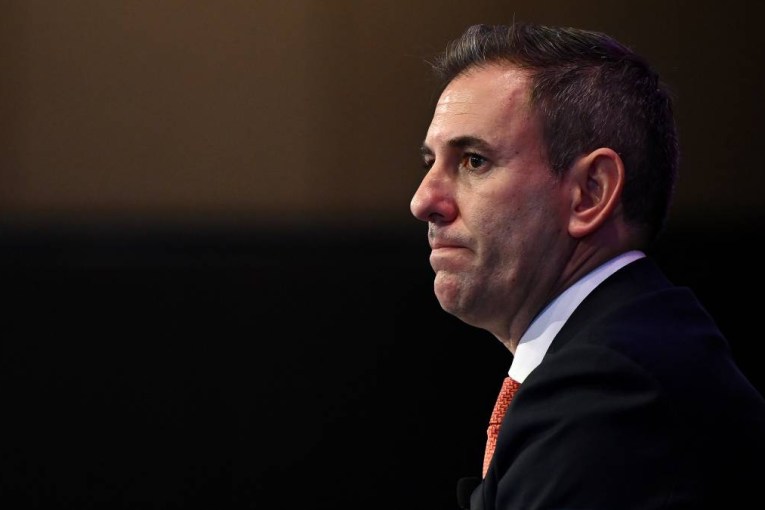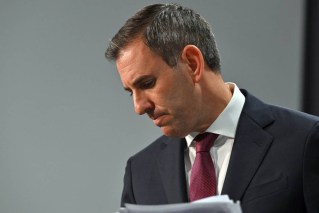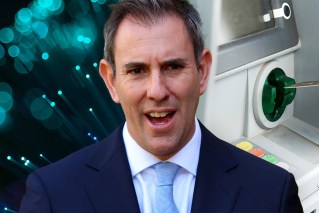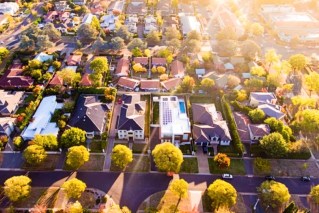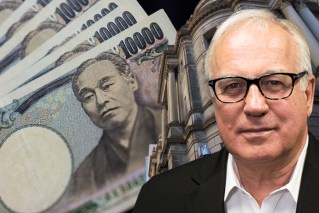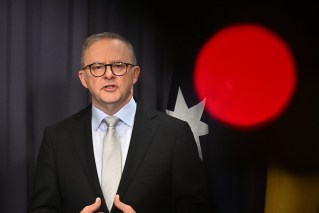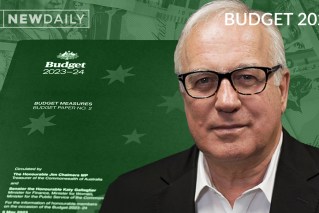Paying down the debt … tell him he’s dreamin’

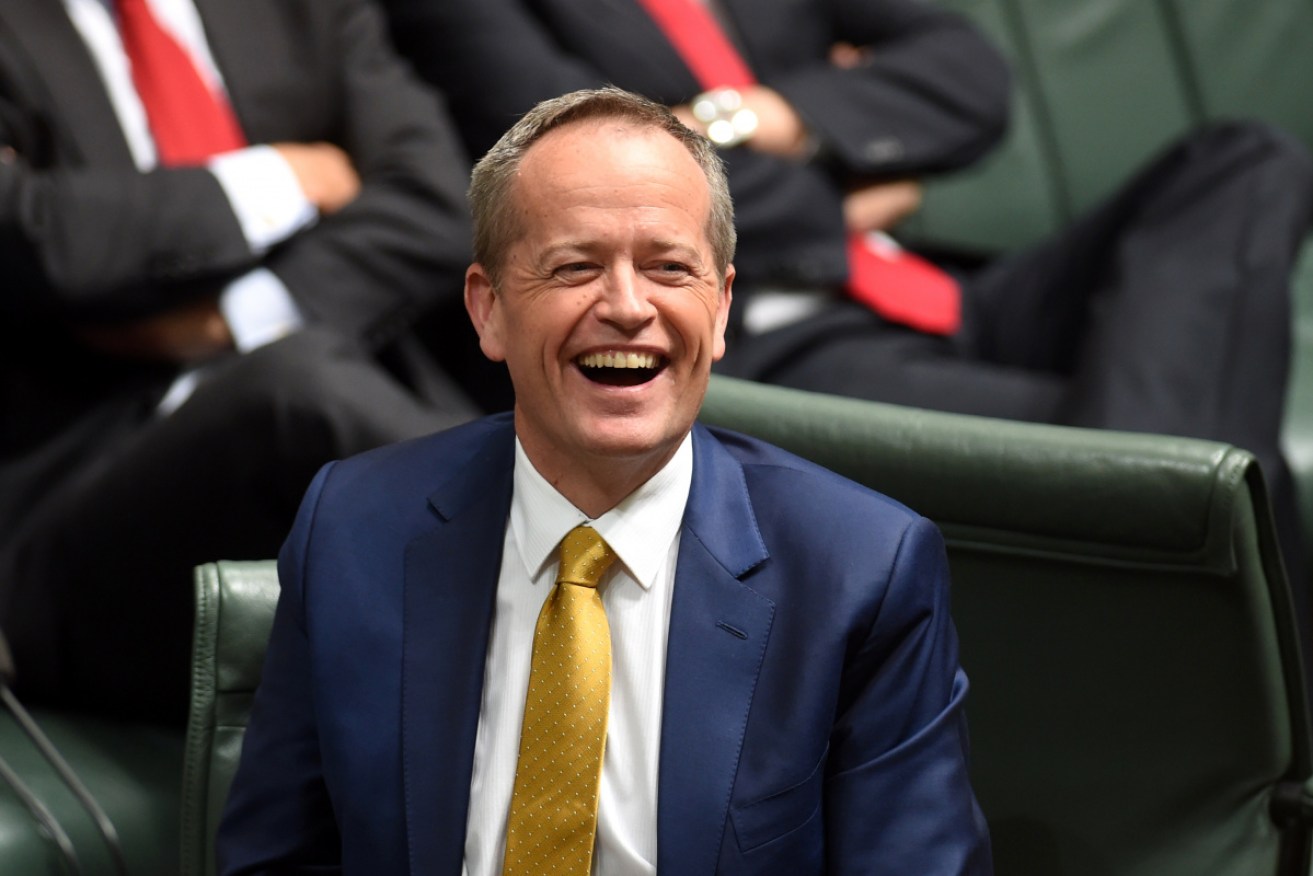
The nation will hear what Bill Shorten thinks of Josh Frydenberg's claims on Thursday evening. Photo: AAP
When Treasurer Josh Frydenberg announced on budget night the government was “back in black” in forecasting a $7.1 billion surplus, some commentators were, well, just a little sceptical.
That scepticism lay in the rapid turnaround in fortunes and the flimsy assumptions about spending and revenue on which it was all built.
After all, in the 2018 budget the government had forecast a budget deficit of $2.5 billion for 2019-20.
Furthermore, the government’s just-revealed $7.1 billion surplus for 2019-20 would represent a turnaround of more than $55 billion in just six years.
But the treasurer wasn’t done with bold claims. And this one would stretch well beyond the usual forward estimates.
The government, he assured the nation, will – not may – eliminate the Commonwealth’s net debt bill of $370 billion by 2029-30.
“Only one side of politics can do this, because only one side of politics has done this – John Howard and Peter Costello paid off Labor’s debt,” Mr Frydenberg boasted.
So, not only will the government produce budget surpluses totalling $45 billion over the next four years, it will also manage to pay down an eye-watering national debt of $370 billion in a little more than 10 years.
How it will do this at forecast economic growth rates of 2.75 and 3 per cent, without massive windfalls or without slashing spending is a mystery to Industry Super Australia chief economist Stephen Anthony, who calls the lofty goal “the height of fantasy”.
“If it’s hard enough to accept projections and forecasts four years out, it’s implausible to accept where things are at by the end of the decade,” Mr Anthony told The New Daily.
“So the notion that net debt could all be written off based on the promises of the next three to four years, with low and slow parameters, with the real possibility of a downturn, what leads you to think that [paying down] a net debt of that level could be achieved [in that timeframe]?”
Yes, the Howard-Costello government paid down the debt of $96 billion which it inherited in 1996, but it had massive windfalls from asset sales, estimated to have yielded about $70 billion.
There is little of the family silver to sell now that could eat up chunks of a debt of $370 billion.
Mr Anthony says the government’s projection relies heavily on the idea that “spending control is achieved and maintained over time”.
“But this is simply assumed in the budget document and simply projected, but not really explained in the budget document how the full extent of spending control is achieved.”
UNSW economist Richard Holden agreed, writing on Wednesday that “the budget documents, voluminous though they are, don’t have the answers” on repayment of the national debt.
Professor Holden intimated that it seemed somewhat of a stretch to go from $370 billion – which represents 19 per cent of GDP – to zero in 10 years, given current growth rates.
“You might ask, then, how do we get from 19 per cent to 0 per cent debt/GDP in 10 years if we’re generating a surplus of 1 per cent per annum?” he wrote in The Conversation.
“A small part of the answer is that with the economy forecast to grow at 3 per cent a year, GDP is a fair bit bigger 10 years from now.
“And a 1 per cent surplus of a bigger GDP number is a bigger dollar surplus. This has a larger impact on net debt. That’s part of the story, but not much of it.
If we make the most generous assumptions in favour of the treasurer and his surpluses [even if you believe them], they’re only paying down about two-thirds of the debt.”
Mr Anthony said for the government to pay off a debt of that scale, there would have to be a huge and “constant wedge between spending and revenue”.
And yet in this week’s budget, the only “Major Savings” listed by the government amounted to a paltry $2.25 billion – and that was over the four years from 2019-20 to 2022-23.
“The more likely scenario is that the historical spending continues and, if it does, then surpluses remain wafer-thin,” Mr Anthony notes.
“And if the government is returned and implements its phase-two and three tax reforms, they won’t be surpluses, in fact they’ll be deficits.”
Any budget document should be viewed through a lens of scepticism and cynicism. But one that contains so little reform and so many sweeteners so close to an election, needs an even more vigilant look.
Veteran ABC broadcaster Barrie Cassidy summed it up best: “As far as I can recall, there’s never been a budget to virtually launch an election campaign … It feels like a campaign pitch, and as a result, I think that invites an extra layer of cynicism.”
"As far as I can recall, there's never been a budget to virtually launch an election campaign … It feels like a campaign pitch, and as a result, I think that invites an extra layer of cynicism"@barriecassidy on #Budget2019 #auspol pic.twitter.com/CH1NPJmGzY
— News Breakfast (@BreakfastNews) April 2, 2019
The New Daily is owned by Industry Super Holdings
